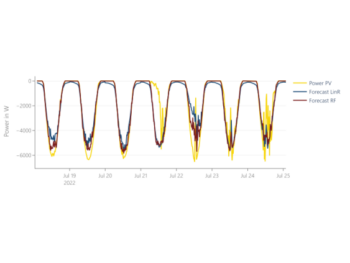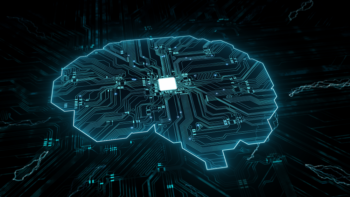Participative aspects in the smart energy system – between theory and practice
Article by Dietmar Miller (SmartGridsBW e. V.) and Daniela Wohlschlager (FfE e. V.)
In the course of a socio-ecological transformation of the energy system, social aspects and possible associated environmental impacts must be considered in addition to technical change. In the introductory FfE series of articles “Participation in the (digital) energy system”, initial findings are presented on the challenges and success factors of social participation in the digital energy system, which were investigated in the course of the Altdorf Flex Market (ALF) demonstration project as part of the SINTEG project „C/sells“. In this follow-up series of articles, extended studies on aspects of socio-ecological sustainability in the context of new solution concepts in the decentralised energy system are presented in three parts, looking back on the C/sells demonstration projects:
Series of articles concerning sustainability aspects in the decentralised and digital energy system
- Participative aspects in the smart energy system – between theory and practice
- Digitalisation and sustainability: (How) do they fit together?
- Life cycle assessment of the rollout of smart metering systems
This Part 1 “Participative aspects in the smart energy system – between theory and practice” presents results on aspects of citizen participation in the context of smart solution concepts. In this article, the “lessons learned” from a wide range of C/sells project activities are presented and general recommendations for action for future solution concepts are given. The research was carried out together with the project partner Smart Grids-Plattform Baden-Württemberg (SmartGridsBW). The contents of the series of articles are based on a publication of the same name, which is available for download in the margin.
Aspects of participation and their implementation in C/sells
“Participation” is understood as a term that is used in many different ways. As already explained in Part 1 of the series of articles on “Participation in the (digital) energy system”, a distinction is made between different forms of participation according to the definition. The concept of participation used in the C/sells project differs in parts from the scientifically widespread and also common understanding of participation in everyday life – namely as participation in deliberative political decision-making processes (cf. [1]). In C/sells, on the other hand, the actors concerned do not make decisions of political quality, but are involved, among other things, in the socio-economic implementation of the energy transition. Active involvement takes place primarily in an information and dialogue process. In addition, involvement through the use of energy infrastructures is also sometimes meant – depending on the respective C/sells demonstration project: ALF is an example of this.
In order to classify the aspects of participation in the C/sells project more precisely, the term is subdivided according to the depth of involvement using the so-called participation pyramid (cf. Figure 1).First of all, a distinction is made between the parties involved – i.e. between those enabling and those involved. While the enabling of participation takes place from the institutional side, the involved person is assigned to the side of the client.

In C/sells, the focus of citizen participation is on the so-called preliminary stages of participation, more precisely the involvement and exchange between science and citizens. In order to do justice to the factual creative scope as a core element of participation, corresponding participatory opportunities, e.g. in a market, as well as integrative processes for informing and involving the participants must actually be available. One of the challenges is to deal with an existing lack of information, for example about the expansion of the digitalised energy system. Consequently, it can be assumed that there is hardly any knowledge about how (scope for design) and what (concrete project or service) can be participated in (cf. [1]).
In the next section, the participatory activities in the course of the ALF field trial are presented – from the approaching of participants to the monitoring and conclusion of the field trial.
The ALF field trial was carried out together with the distribution grid operator Bayernwerk AG from October 2019 to March 2021 with the involvement of 18 owners of decentralised storage, generation or consumption systems. These probands participate in the energy system as so-called „flexumers“ (cf. [4]) by making their plants available for flexible use and thus for grid stabilisation. With reference to the participation pyramid in Figure 1, the first three stages were implemented in ALF as preliminary stages of participation (cf. more detailed description in Part 1 of the series of articles “Participation in the (digital) energy system”). Although the participants made a decision by agreeing to the integration of their own plants into the demonstration project, a full achievement of the 4th stage would have required co-determination on the processes of the Flex Market. The steps from the preparation of citizen involvement to the field trial completion are outlined below.
Preliminary work on addressing participants
Even before the development of the concrete participation concept, the provision of information in the project region was started through several events on the topic of the energy transition. As part of the participation work by SmartGridsBW, a website and social media were set up with the slogan “I am the future” to focus on the role of citizens in helping to shape the future energy system.
For the elicitation and integration of target group-specific incentive mechanisms as well as the definition of content, scheduling and communication channels used, FfE developed a “participation concept” at the beginning of the project. This included the development of an acceptance model (see Figure 3) to investigate the acceptance of new solution concepts and the reasons for participation.

For this purpose, elements from the theory of reasoned action (TRA), the theory of planned behaviour (TPB) and the technology acceptance model (TAM) were combined. The resulting categories (Figure 3, left-hand side) were used to derive the questions for a survey of the field test participants. The survey results revealed a positive attitude towards digital solution concepts as well as primarily intrinsic motivation reasons for participation (cf. Part 2 of the series of articles “Participation in the (digital) energy system”). These mainly included their own contribution to the (regional) energy transition. As part of the field trial, an app was developed with the help of which participants could register on the ALF platform and at the same time access information about the field trial and their participating plant. To ensure ease of use, the registration process and functionality were explained in addition to written instructions at the launch event and via an explanatory video.
Participant approach and accompaniment
Figure 2 shows the participatory activities over the course of the field trial. The process of approaching participants began in February 2019. As part of the participation concept developed, interested parties were recruited for the field trial via multipliers (local interest groups, mayors), public channels and citizen dialogues. However, due to a lack of technical suitability among a large number of interested parties, it became apparent that the concept needed to be expanded to include a “functional approach” (cf. [8]). The analysis of the technical requirements of decentralised systems and the function of the iMSys architecture was the starting point. Through targeted large-scale letters to potentially suitable households in the project region under consideration, it was possible to expand and complete the recruitment of test persons.

During the connection of the participants to the field trial, delays occurred during installation or also due to registration on the platform. In the further course, there were isolated technical malfunctions in the systems or the iMSys infrastructure of connected test persons, which required the installer to travel to the site again to restore functionality. In addition, the COVID-19 pandemic led to an installation stop in the meantime. In order to keep the participants informed about the progress of the project, a regular ALF newsletter was introduced and a “kick-off” event was held in the Altdorf town hall with the project team, participants and the mayor after half of the installations had been completed. These communication measures were continued until the end of the field test, including a results brochure at the end of the project. The regular communication was found to be informative and helpful in a follow-up survey on the field trial among the participants.
Conclusion: Flexibility also applies to the participation concept – reaction to changing conditions is essential
- Integrate leeway in the schedule: In a field trial for testing technology under real conditions, there may be possible delays in the schedule, as in ALF. This must be taken into account accordingly in the planning as a buffer.
- Adapt concept to possible external factors: In order to be able to react to unscheduled external factors (e.g. technical disruptions), the originally defined participation concept should be modifiable to new framework conditions. This includes, for example, changing parameters such as the target number of participants, the frequency and format of information provision or the scope of data collection in such a way that they are both feasible within the framework of the project and sufficient for the project’s success.
- Relevance of regular information: Overall, regular information provision is seen as an extremely relevant element of the participation concept, which also helps to strengthen trust in the project.
Outlook for Part 2 of the series of articles: Digitisation & Sustainability: (How) does it fit together?
In addition to social aspects such as new participation opportunities, the effects of digitalisation measures on the environment play a role in the sustainable design of the energy system. The following part 2 of this series of articles deals with relevant aspects in the field of tension between digitalisation and sustainability with regard to environmental impacts.
This article is part 1 of 3 in the series of articles “Sustainability aspects in the decentralised and digital energy system”.
Further information:


